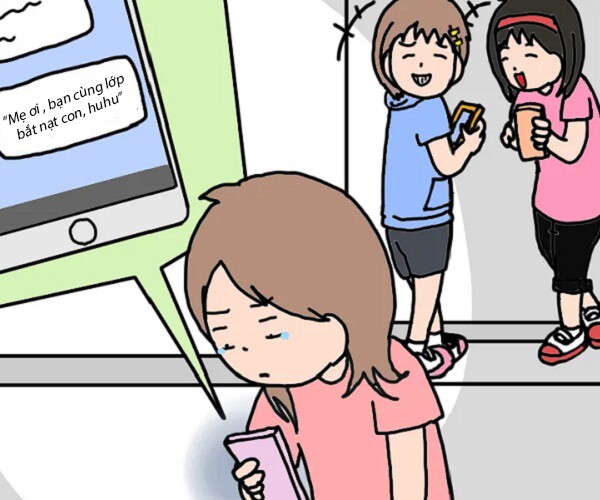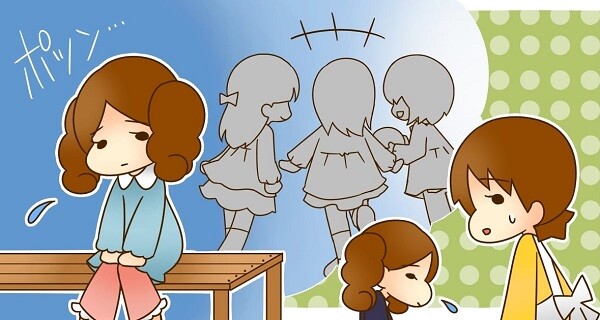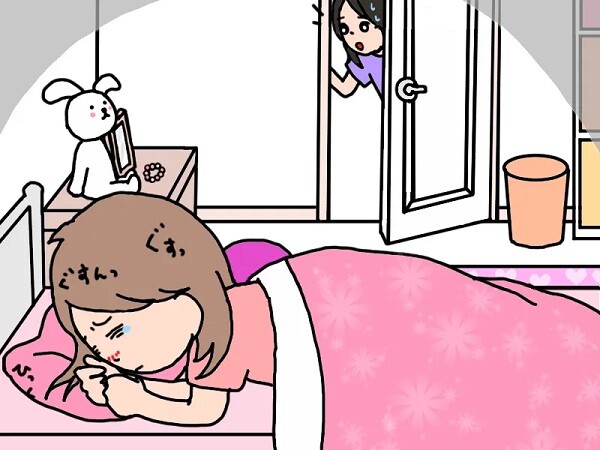A suggestion from an education expert: instead of merely reacting emotionally, parents should master three principles: safety first, emotional counseling, and development of capabilities.


A three-step method to resolve conflicts and bullying among children

Image source: Pinterest.
Accept with empathy and soothe the child’s emotions
When conflicts arise between young children, such as being pushed and falling down, parents should refrain from scolding or blaming either party. Instead, embrace the fallen child and say, “Your knee is hurt from the fall. You must feel very wronged, don’t you?” This kind of care helps the child feel safe and creates a space for them to express their emotions.
Once the child has calmed down, guide them to explain what happened. Encourage them to talk about their feelings and the reasons behind the conflict. For instance, a mother can ask, “Can you tell me why you were pushed?”
Empathy opens the door for better communication with the child in the future.

Accept with empathy and address the child’s emotions.
Role-play and practice “fighting” in a realistic manner
Parents can play a “conflict simulation” game with their children to develop communication skills and coping strategies for challenging situations. In this game, create various scenarios, such as another child stealing their toy.
Teach the child to say, “This is my toy; you can’t take it.” This helps them learn to assert their rights confidently.
Encourage children to take turns mediating
Instruct the children to take turns being the mediator. Teach them to say, “Let’s take turns making peace, okay?” and to use words instead of pushing or shoving. This can reduce conflicts among children by up to 60%.
This peer-support model is far more effective than parental intervention. When children take part in the resolution process, they feel a greater sense of responsibility for their actions and learn to listen to others. Additionally, when they put themselves in their peers’ shoes, they gain a deeper understanding of their friends’ emotions and perspectives, reducing conflicts and fostering a more positive learning environment.

A parent’s reaction to these two common bullying situations can shape their child’s future
When a child is given a nickname
Bullies often choose nicknames that mock or assert dominance over the victim. These nicknames can stem from various factors, such as physical appearance, hobbies, or even personality traits.
A little girl named “kefei” by her family was given the nickname “coffee” by her classmates, which made her feel embarrassed. Instead of scolding her classmates, her mother decided to take her to a coffee shop.
After tasting the delicious drinks and experiencing the cozy atmosphere, the girl started to view her nickname differently. The pleasant flavors and surroundings made her feel unique and stylish, as if her nickname evoked new and exciting experiences.

Parents are advised to handle bullying situations skillfully.
When a child is isolated
Instead of directly complaining to the teacher, a mother whose child was isolated by classmates chose to invite the other children over to their house. She offered them delicious snacks and taught her child to share toys. By the end of the semester, the distances between the children had shortened, and they became close friends. This mother skillfully resolved the issue, demonstrating that sincere actions are more powerful than lectures.

Prevention is better than cure: Train your child in these three areas
Physical defense
According to a professional Taekwondo instructor, children can be taught proper self-defense techniques from the age of five. However, the focus should not be on offensive skills but on cultivating spatial awareness. For example, in the game “Eagle Catches Chickens,” teach children to maintain a safe distance and evacuate quickly when faced with danger.
Self-expression through words
A kindergarten principal shared a tip for guiding children to express themselves: Instead of asking “Did you have fun today?” use phrases like “Do you have anything you want to tell me about today?” and “What games did you play with your friends this afternoon?” This approach encourages children to actively reflect on their experiences and improves their ability to express their needs.
Emotional regulation
Psychological counselors recommend a tool called the “Emotion Thermometer.” Parents can ask their children to rate their emotions for the day on a scale of 1 to 10. If the rating is above 5, a detailed conversation about the day’s events is necessary.
This method helps children establish an early warning system for their emotions and seek help before conflicts escalate.

Help children regulate their emotions.
What not to say when your child is treated unfairly
“Why doesn’t bully A pick on someone else?”
This will only make the child feel endlessly inferior.
Try saying: “It’s not your fault; let’s find a solution together!”
“If someone hits you, hit them back!”
This may trap the child in a cycle of responding to violence with violence.
Ask: “How can you protect yourself without hurting others?”
“Stay away from those bullies!”
In reality, escape is not the answer.
Teach children to say: “I prefer to play with friends who respect me.”

Strategies for special situations
When a teacher is biased: Written communication is advised, with factual statements presented instead of emotional expressions. For example, “At [time], my child was pushed and fell in class (photo attached). I would like to know what happened.” Objective statements are more likely to receive a fair response.
When the other child’s parents are uncooperative: Request that the school establish an anti-bullying prevention system. Additionally, collaborate with other parents to promote the creation of class conventions and use collective strength to restrain individual bullying behavior.

If a child exhibits signs of stress, parents should seek professional advice.
When the child exhibits stress responses: If the child experiences nightmares or reluctance to go to school, it may indicate post-traumatic stress. Parents should seek professional help in such cases.
Parents should guide their children to assertively say “no” when necessary, seek help when needed, and protect themselves. This is the best “armor” a parent can provide for their child.
“4 Behaviors That Indicate Overly ‘Innocent’ Parenting: Protect Your Child From Bullying”
A child who is overly meek may become a target for bullies. It is important for parents to recognize the signs of an overly submissive personality and take steps to empower their child. This may include encouraging them to stand up for themselves, teaching them assertiveness skills, and boosting their self-esteem. By helping their child develop a healthier sense of self-worth, parents can reduce the risk of them becoming a victim of bullying.
The Rebel Child: Mastering the ‘Bamboo Tree’ Method for Parenting with Gentle Firmness
The “Bamboo Tree Method” is a unique and effective approach to parenting and education, gaining traction among those seeking a balance between love and discipline. This method equips parents with the tools to navigate the delicate tightrope of parenting, allowing them to be emotionally available and supportive while also providing a firm and consistent direction.



































